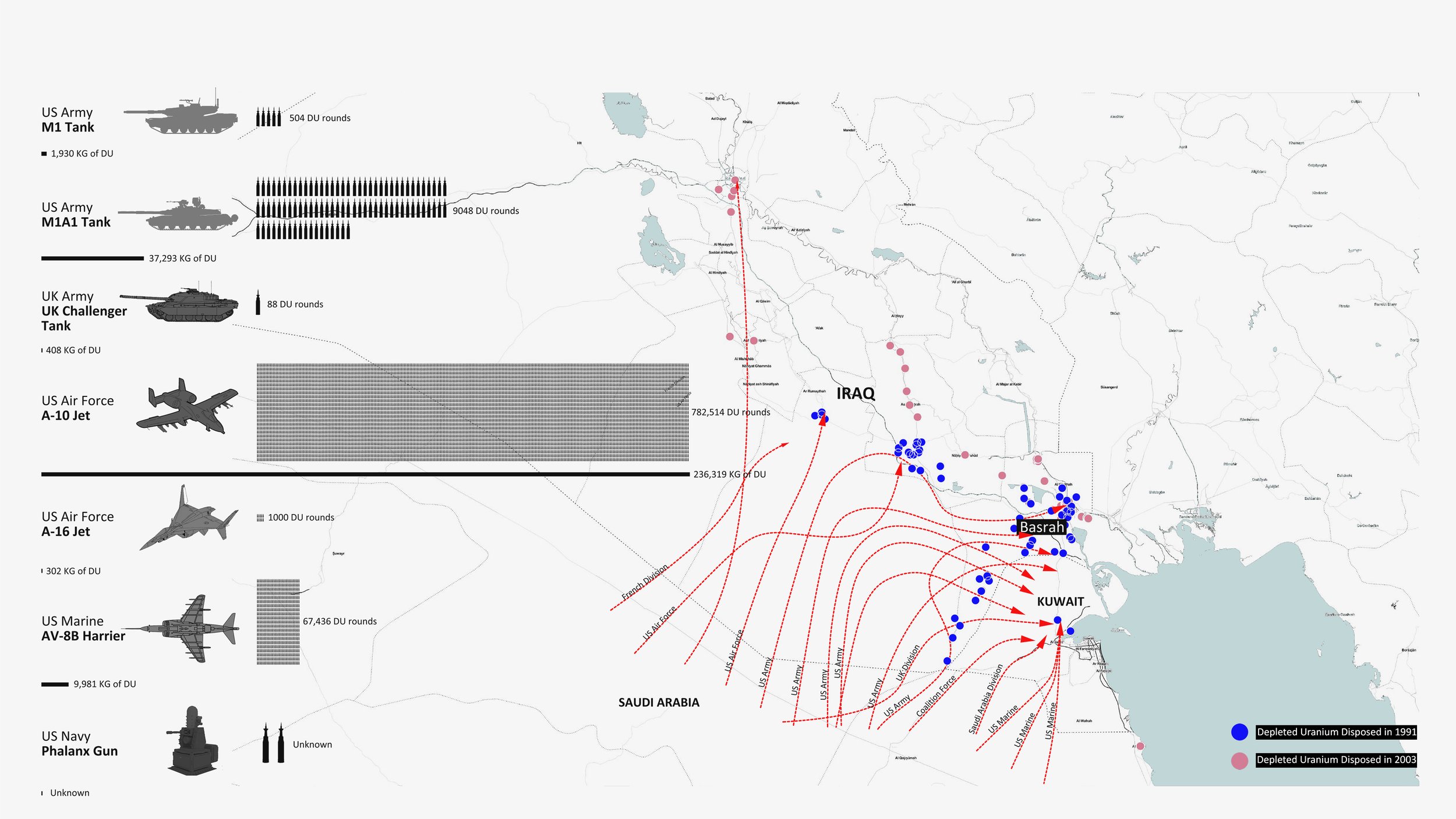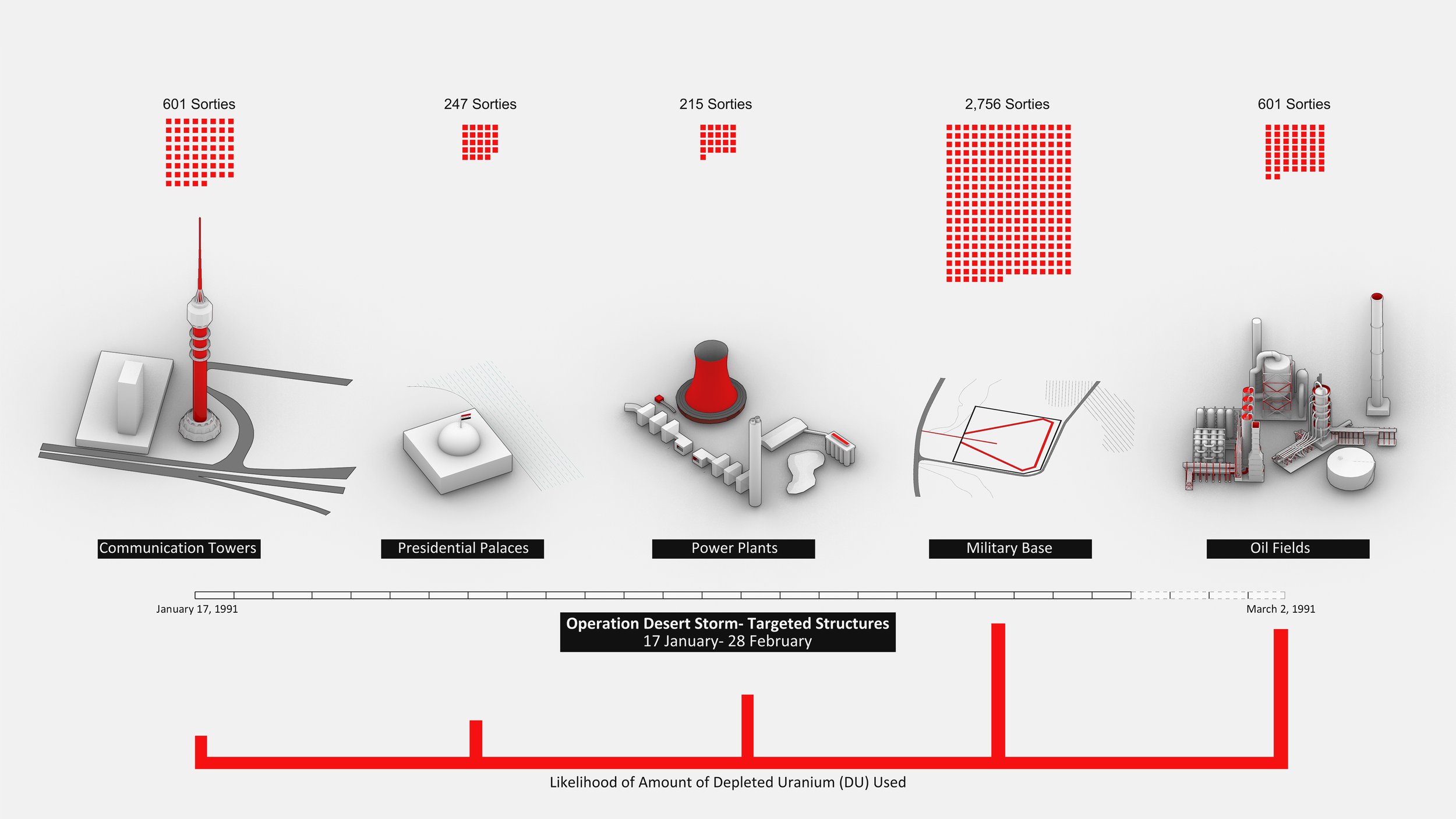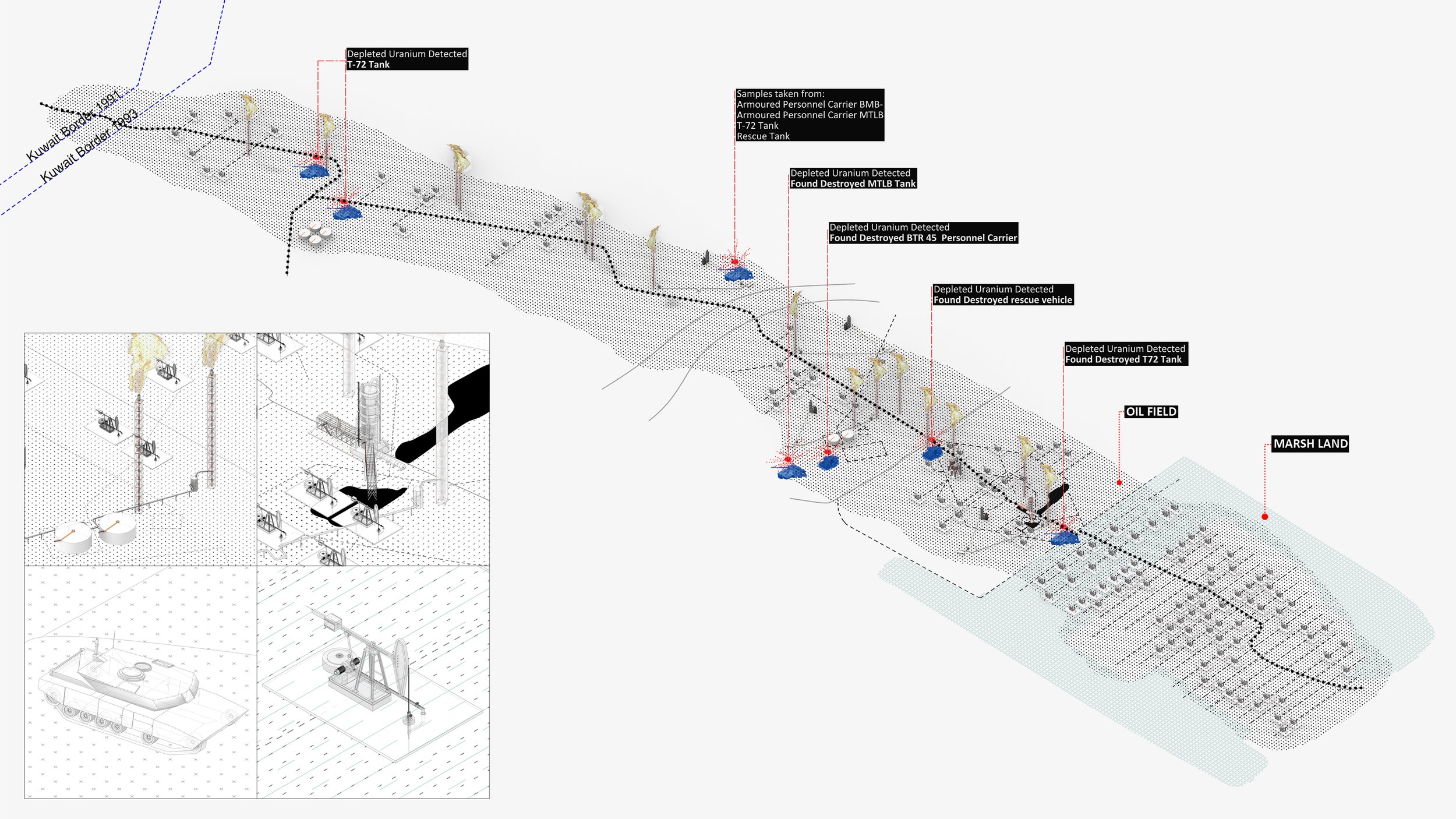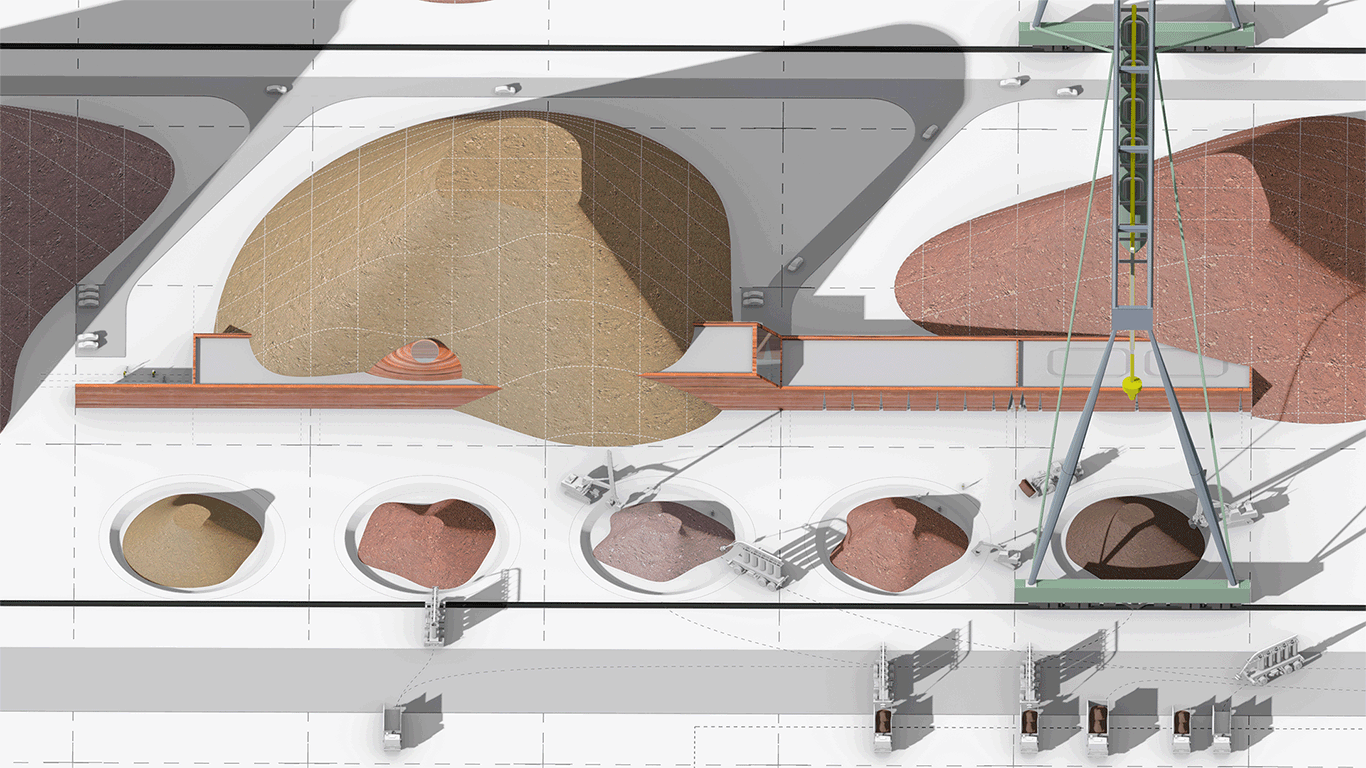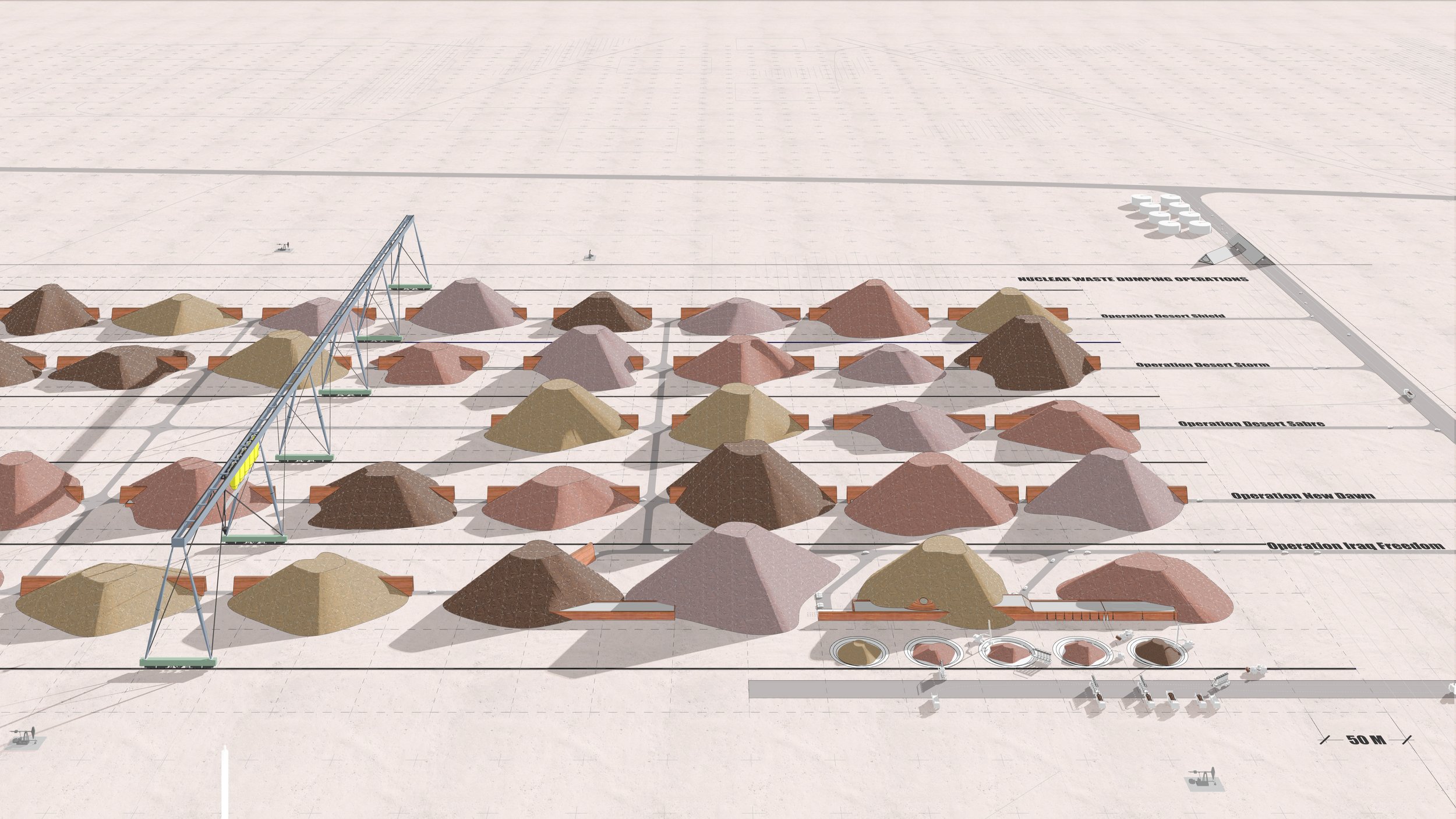War as Wasteland: The Ghostly Presence of Depleted Uranium in Iraq
War as Wasteland: The Ghostly Presence of Depleted Uranium in Iraq
The project excavates the toxic legacy of war in Iraq, in particular the way in which war was the mechanism by which the waste byproduct of producing Nuclear fuel was deconcentrated within the United States and diffused in Iraq.
Since the 1991 Gulf war, Iraq has been a subject of a large-scale toxic warfare experiment. Operation Desert Storm, and the war interventions that followed in Iraq, provided the ground for the US military to experiment with Depleted Uranium; a nuclear waste by-product that has been used within ammunitions as the weapon of choice for imperial adventurism and military operations. Four decades of war in Iraq left the country with a concentration of toxicity within the environment: present in the soil, water, and air.
From Uranium mines on the Colorado Plateau and Nevada to Uranium Enrichment plants in New Mexico; the waste by-product of producing nuclear fuel (Depleted Uranium) was concentrated within military ammunition, to be used for the first time during the 1991 Gulf war.
This movement of hazardous waste highlights the toxic legacy of nuclear waste dumping sites within the United States and consequently in Iraq. Western narratives around the Gulf war circulated imagery that misread the desert as an empty landscape that can be violated. The project looks at the Gulf war as a site of chemical concentration, to investigate the ghostly presence of Depleted Uranium within Iraq. While television coverage of the war through 24-hour cable news cycles, such as CNN, produced mediated images of war and its weaponry systems, which was central to the social consumption of military power. In contrast, Depleted Uranium is a ghostly and invisible residue of the war, which remains little known and often deliberately obscured from view.
Crit: Mark Wasiuta, Columbia University, GSAPP
